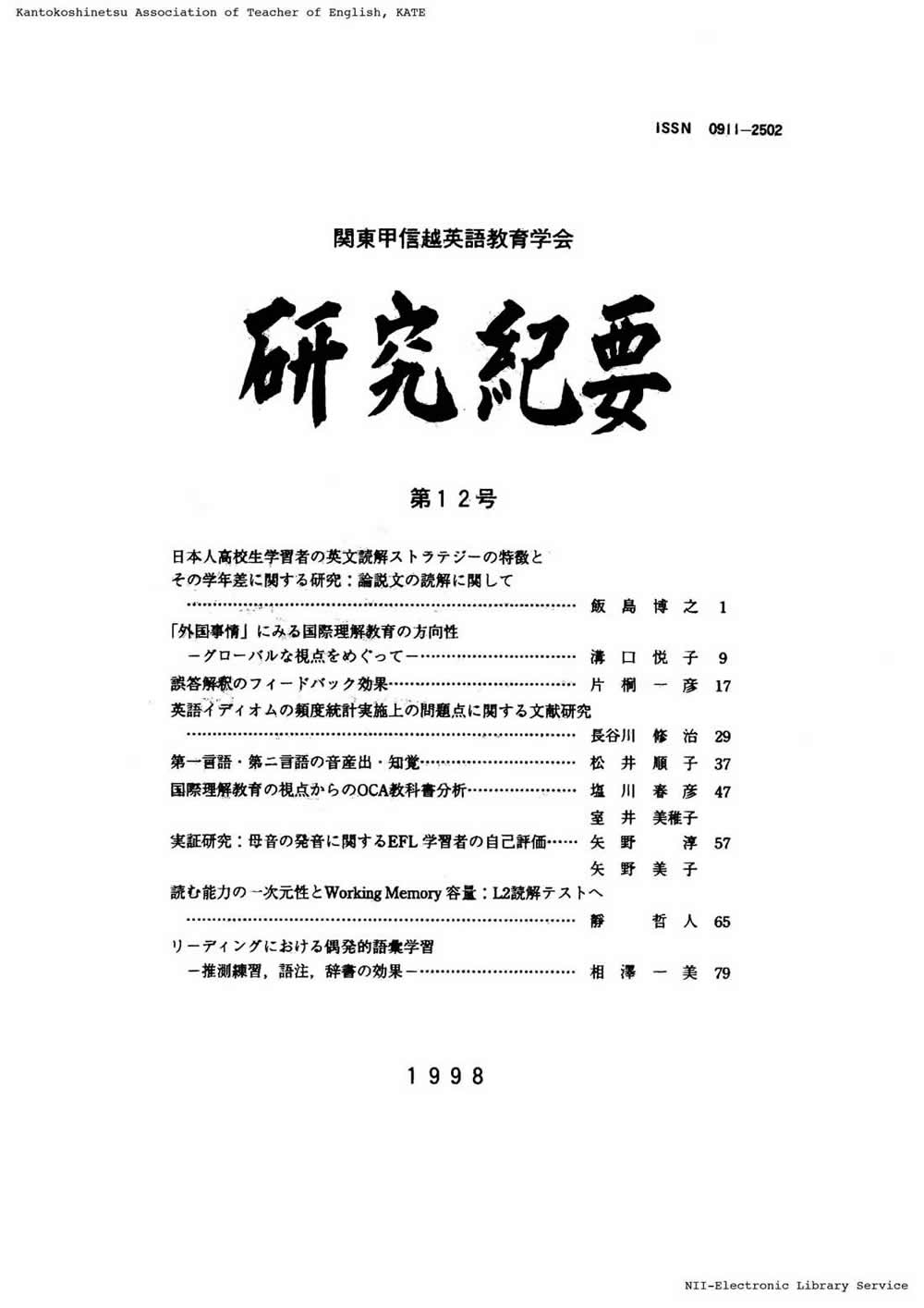Volume 12
Displaying 1-13 of 13 articles from this issue
- |<
- <
- 1
- >
- >|
-
Article type: Cover
1998 Volume 12 Pages Cover1-
Published: March 01, 1998
Released on J-STAGE: July 14, 2017
Download PDF (36K) -
Article type: Cover
1998 Volume 12 Pages Cover2-
Published: March 01, 1998
Released on J-STAGE: July 14, 2017
Download PDF (36K) -
Article type: Article
1998 Volume 12 Pages 1-8
Published: March 01, 1998
Released on J-STAGE: July 14, 2017
Download PDF (748K) -
Article type: Article
1998 Volume 12 Pages 9-15
Published: March 01, 1998
Released on J-STAGE: July 14, 2017
Download PDF (539K) -
Article type: Article
1998 Volume 12 Pages 17-27
Published: March 01, 1998
Released on J-STAGE: July 14, 2017
Download PDF (770K) -
Article type: Article
1998 Volume 12 Pages 29-36
Published: March 01, 1998
Released on J-STAGE: July 14, 2017
Download PDF (637K) -
Unidimensionality of Reading Ability and Working Memory Capacity : Implications for L2 Reading TestsArticle type: Article
1998 Volume 12 Pages 65-78
Published: March 01, 1998
Released on J-STAGE: July 14, 2017
Download PDF (1092K) -
Article type: Article
1998 Volume 12 Pages 79-94
Published: March 01, 1998
Released on J-STAGE: July 14, 2017
Download PDF (973K) -
Article type: Appendix
1998 Volume 12 Pages App1-
Published: March 01, 1998
Released on J-STAGE: July 14, 2017
Download PDF (32K) -
Article type: Appendix
1998 Volume 12 Pages App2-
Published: March 01, 1998
Released on J-STAGE: July 14, 2017
Download PDF (32K) -
Article type: Appendix
1998 Volume 12 Pages App3-
Published: March 01, 1998
Released on J-STAGE: July 14, 2017
Download PDF (32K) -
Article type: Cover
1998 Volume 12 Pages Cover3-
Published: March 01, 1998
Released on J-STAGE: July 14, 2017
Download PDF (44K) -
Article type: Cover
1998 Volume 12 Pages Cover4-
Published: March 01, 1998
Released on J-STAGE: July 14, 2017
Download PDF (44K)
- |<
- <
- 1
- >
- >|
